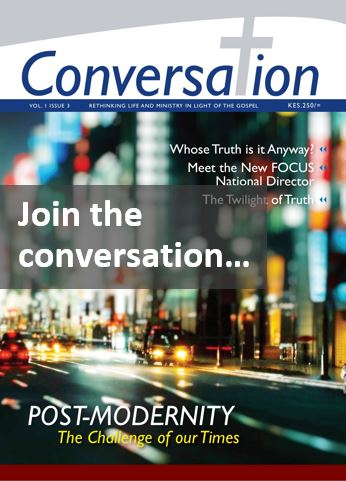
In one sense the gospel is very simple.
Christ suffered once for sins, the righteous for the unrighteous, to bring you to God (1 Pet. 3:18)
The gospel is solidly centred on the Cross of Christ with the chief end being fellowship with God. As J I Packer put it: ‘adoption through propitiation’ (Knowing God, p. 241). John Stott was spot on that the core of the atonement is Christ as our substitute – the great exchange. That is not a ‘model’ – that is the reality at the very heart of the atonement. All the (valid) ways of talking about the atoning work of Christ are perspectives on that truth or metaphors to describe it or roads that end up there.
So in one sense it is quite simple. Wonderfully. The Son of God is punished in my place that I might be a son of God. A three year old can understand that. But then when you get thinking about it theologically you find that it is actually quite complex.
I remember preparing for a talk on 1 Corinthians 15:1-11 a few years ago. As part of my preparation I read quite a bit of John Owen’s The Death of Death in the Death of Christ and a few other shorter papers. Suddenly I realised I was out of my depth in very deep waters. I started to wonder whether I really understood the gospel at all. Fortunately I did come out of the forest with something I was able to give to the student gathering but it opened my eyes to see something of how complex and deep the atonement is.
For example, how would you answer these questions:
- What role does the incarnation play in the atonement?
- What role does the resurrection play in the atonement?
- What role does the ascension play in the atonement?
- Did Christ die for everyone or for his elect?
- What was the most awful suffering for Christ on the Cross?
- How did that suffering deal with guilt, shame, law, wrath?
- How could God justly punish the innocent and justify the guilty?
- What was going on within the Trinity as Christ died? Who was punishing? Who was being punished? Was there a rupture in the Trinity? What was the role of the Spirit?
- Did God die?
- What were the chief ends/goals for which Christ died?
- How does Union with Christ relate to the atonement?
- How does faith relate to the atonement?
- How do the covenants of the Old Testament relate to the atonement?
- How does the theme of the glory and revelation of God relate to the atonement?
- How does the theme of wisdom relate to the atonement?
I am sure there are good and satisfying and wonderful answers to all these questions but my point is that they are not simple and some are very complex indeed. You’re not going to get a handle on some of these questions without a lot (perhaps a life time) of hard prayerful study.
To make a slightly different point, I have been getting very excited recently by the rich complexity of the ways in which the Bible tells the gospel. Just take Isaiah. Look at some of the different metaphors and imagery:
- Scarlet sins being washed as white as snow.
- Marriage, adultery, jealousy, divorce, wedding. God as husband. His people as the unfaithful bride. The prostitute is brought back as the faithful one.
- Darkness and gloom to light of dawn.
- God with us.
- Beauty of the LORD, ugliness of sin, the marred man, new beauty.
- The rock, refuge, shade from heat, refuge from rain.
- Justice, injustice, judgment, righteousness, guilt, law court. The true judge redeems through justice.
- Topography. Mountain of the LORD exalted. Hills flattened. Valleys filled.
- Sick battered body. Beaten bruised body. Disease. Healing.
- Joy and distress.
- Dishonour, shame, honour. Pride brought low. Humility exalted.
- Trees, bushes, stump, branches, vines. Growth, fruit, cut down, planting. Fertile to barren and barren to fertile land.
- Sovereignty. The zeal of the LORD, the unstoppable plan, decree, will of the LORD to judge and save.
- Architecture. City ruined and rebuilt.
- Kingship. Human kings, divine king. Bad kings, good king.
- Faith, trust, taking refuge in, relying on, looking to.
- Scattering and gathering.
- Eden. Curse to new Eden.
- Exodus. Parting of the sea, column of cloud and fire, way through the wilderness. New Exodus from Exile.
- Oppression and freedom. Removal of rod and burden of oppressor.
- Fear and comfort.
- Restlessness and rest.
- Populous places left deserted. Deserted places filled with life and people.
- Idols versus the true God. Idols smashed or thrown away.
- Fire, burning wrath, sacrifice.
- Warrior, battles, sword, bloodshed, victory, conquest.
This is not even an exhaustive list. The point is that each of these metaphorical schema are ways in which the gospel can be told – and is told in Isaiah. Each one is like a different palette of colours which Isaiah can use to paint the atonement. So he might use the blacks and browns and yellows and oranges of the darkness/light theme to show how the dawn of Christ has broken into the darkness and gloom of sin. And then he might turn to the greens of the horticultural palette to paint the gospel in terms of fruitless trees cut down and then a new branch growing up. And then he might take up the red and orange and white of fire/sacrifice to paint how the fire of judgment will sweep through but be absorbed by a perfect sacrifice. Sometimes (in fact often) he picks up two or three palettes at a time and blends imagery – e.g. of city and marriage and beauty and joy.

Let’s start to appreciate the beautifully complex way in which the Bible tells the gospel. Let’s not reduce it to ‘Christ died for you’ every time. Let’s preach the passage of Scripture in front of us and see how the atonement is painted there. Is it sacrifice? Is it law court language of guilt and justification? Is it warrior langauge of a hero overcoming our enemies? Let’s preach the gospel in the variety with which it is presented. Not only will that mean that we don’t need to fear that ‘preaching the gospel every week will be boring’ – we will also see how the Cross of Christ deals with all the multifaceted ugliness of sin and opens out into a multifaceted Christian life.




What do you think?